Introduction
Jordan is a small country in the Middle East, often considered one of the most stable from the economic and political perspective. The country attracts more than 1 million visitors every year, most of whom are coming especially for Petra, one of the seven new wonders of the world.
Further south from Petra, Jordan shares a long stretch of desert with Saudi Arabia, the land of the bedouins. Part of that area is the red desert of Wadi Rum, famous for being the filming location for a lot of Hollywood movies.
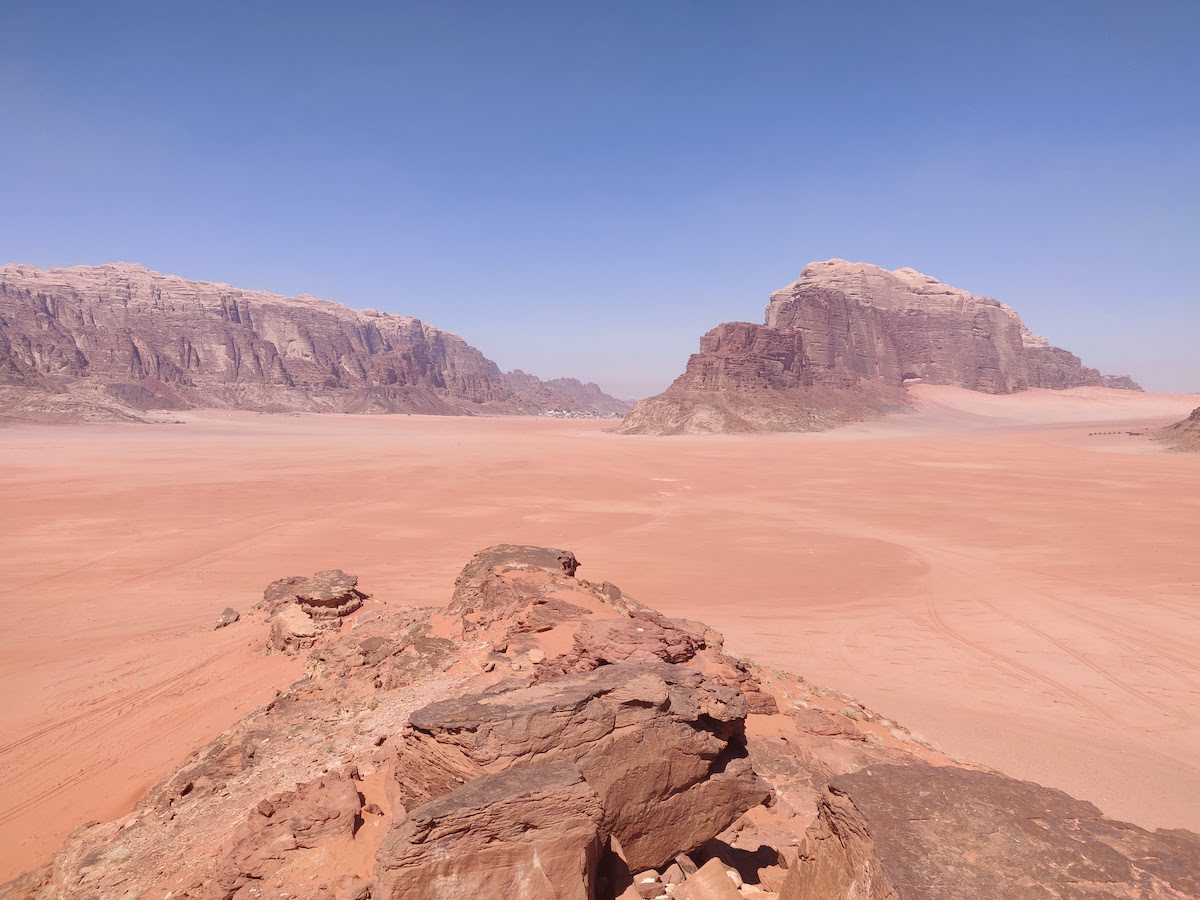
Petra and Wadi Rum are usually visited together due to their proximity, but of course you can choose a different itinerary.
How to organize your trip
We visited Jordan during a longer trip that also covered Israel. However, it is a country that you can visit separately, you can easily spend around a week touring it.
Since we only had a few days and getting in and out of Jordan from Israel is not that straight-forward (though it's not as hard as you think), we decided to book a trip with an Israeli company. It turned out to be the best decision as we had an amazing experience with Abraham Tours and we definitely recommend them to everyone.
A lot of travel agencies in Israel offer trips to Petra and if you're short on time, it is definitely your best option as they take care of everything for you.
Petra and Wadi Rum are located in the southern part of Jordan, so the best starting point is Eilat, the small town on the Red Sea. You can also book trips directly from Jerusalem or Tel Aviv, but you spend a lot of time on the road and it's not worth it. Plus, Eilat is a great destination by itself and there are plenty of things to do there, if you choose to stay for a few days.
So in the middle of our stay in Eilat, we booked this 2 day trip to Jordan. Keep in mind that while the trip itself seems expensive when you consider the period, Jordan is in general a very expensive country.
We were 12 people in the group, and it was a great experience. Someone from the travel agency organized our departure from Eilat and we were driven to the border, which is just outside the city. We crossed the actual border on foot, and there was another person waiting for us on the Jordanian side. He helped us with the legal formalities and guided us to our small bus. There we met our guide, Mahmoud, who was with us for the entire duration of the trip.
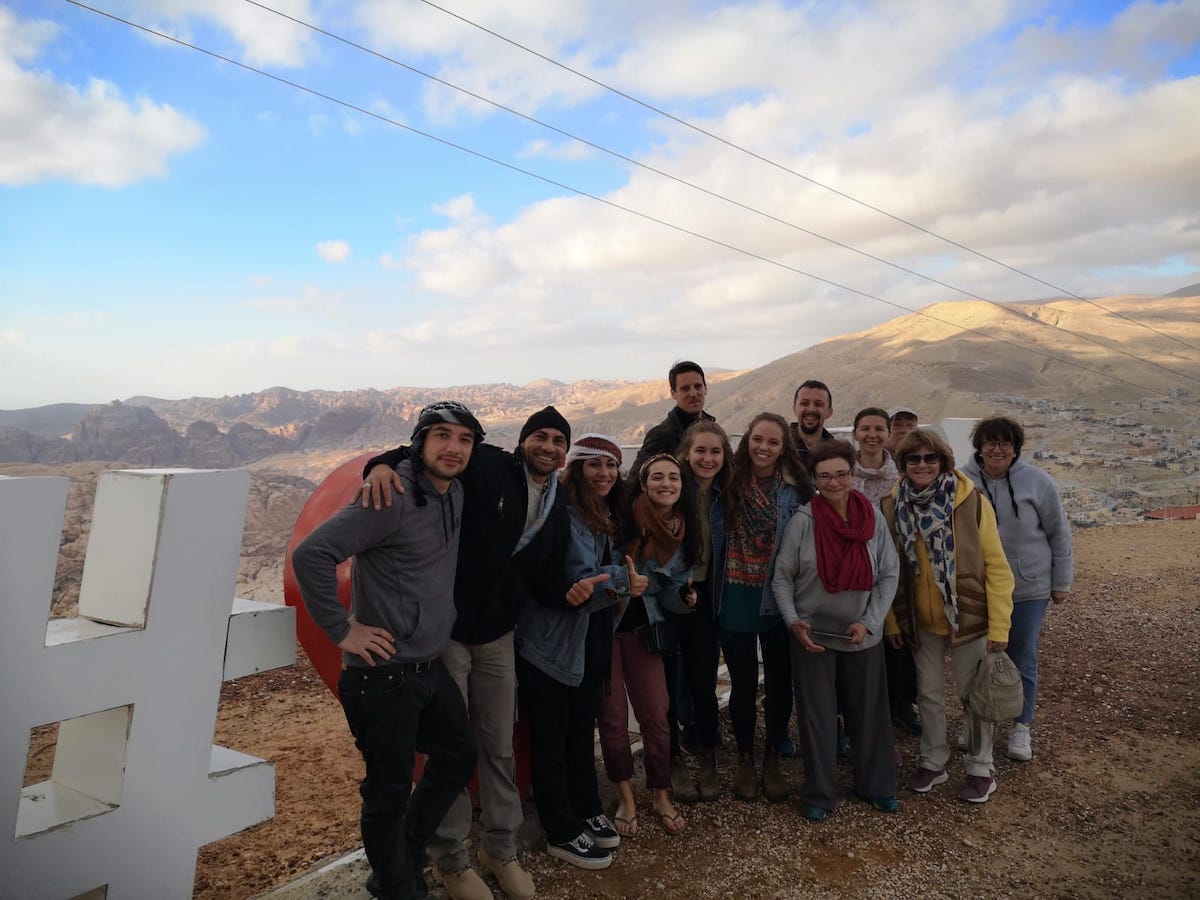
We've been to a lot of countries and we had a lot of guides in the past few years but we have to say Mahmoud ranks somewhere at the very top of the list. He was extremely funny, highly knowledgable and created a wonderful experience for everyone in the group.
Activities
We crossed the border in the morning and headed to Aqaba, the city on the Jordanian side of the Red Sea. Here we had breakfast at a local restaurant and then jumped back in the bus for the two hour drive to Wadi Rum.
The fun part began as soon as we entered the Wadi Rum National Park and exchanged our bus with two open 4x4 pickup trucks for our desert tour.
Jeep tour in Wadi Rum
Touring the Wadi Rum desert is a surreal experience. You feel small as you climb on top of a sand dune to get a 360 degree view of the surrounding area. There's something about the emptiness of the desert that cannot be described, it has to be felt in person.
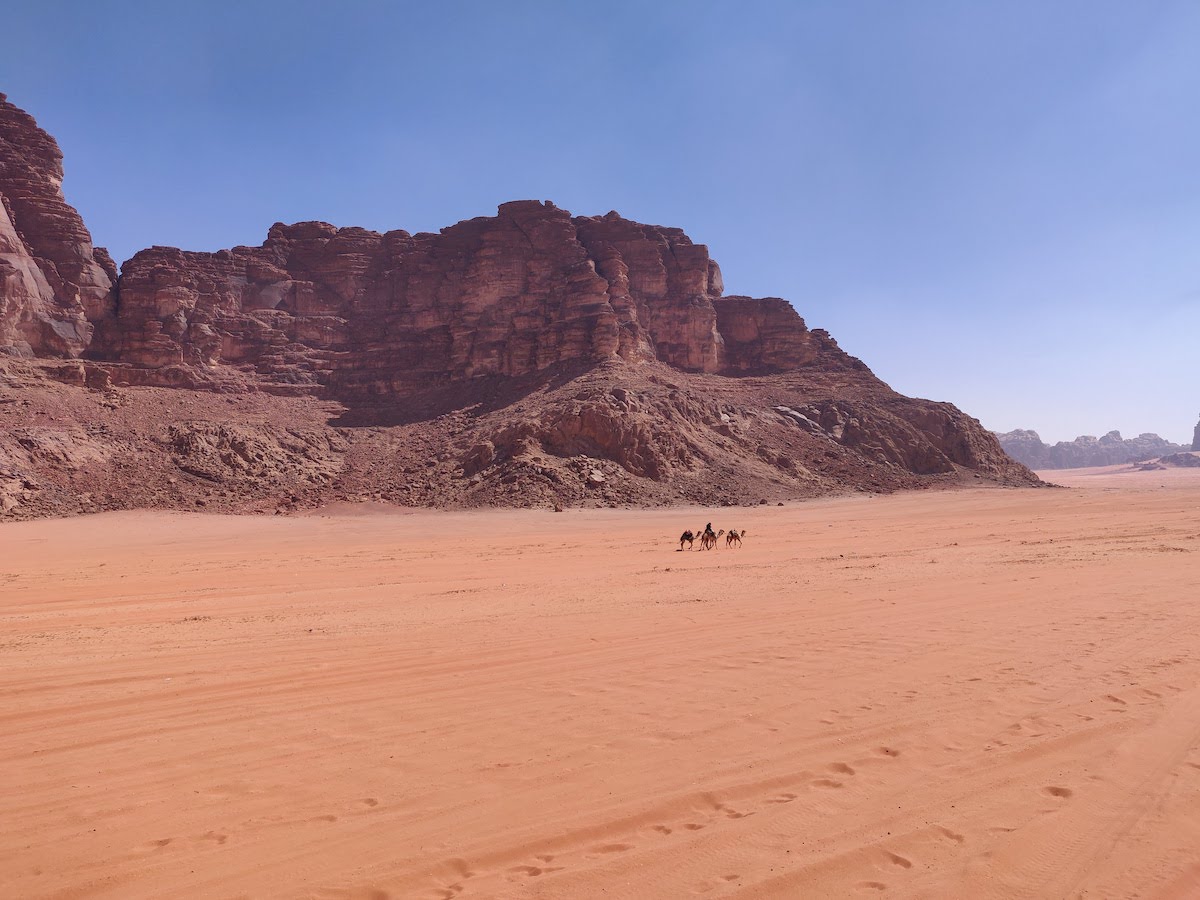
We spent around 2-3 hours touring the desert, with 4 stops for short hikes to viewpoints. Around 4pm we arrived at the bedouin camp, which would be our home for the next hours and for the night to come.
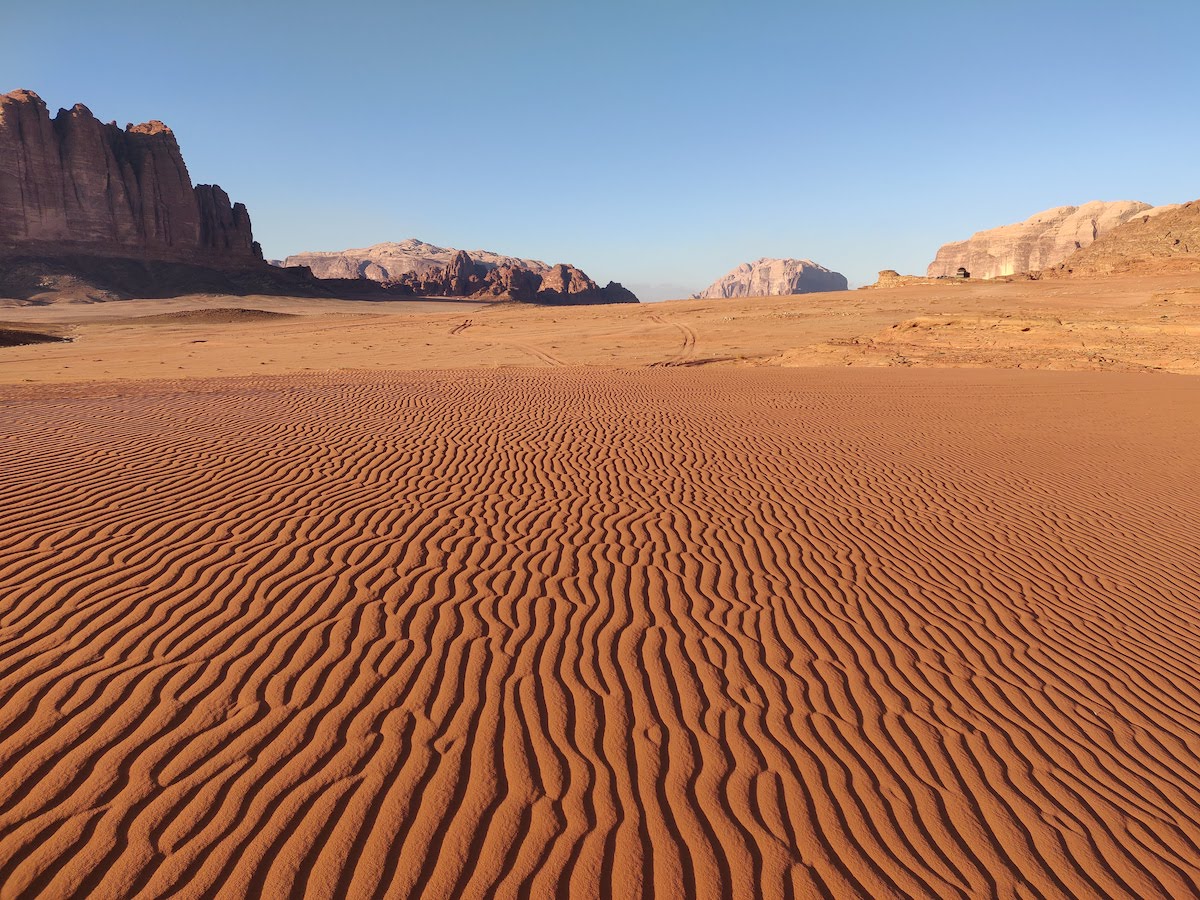
Bedouin camp experience
There are dozens of camps around the desert that welcome guests from all over the world. We had a room ready at Mohammed Mutlak Camp part of our trip, but you can also book on your own as most of the properties are on booking.com.
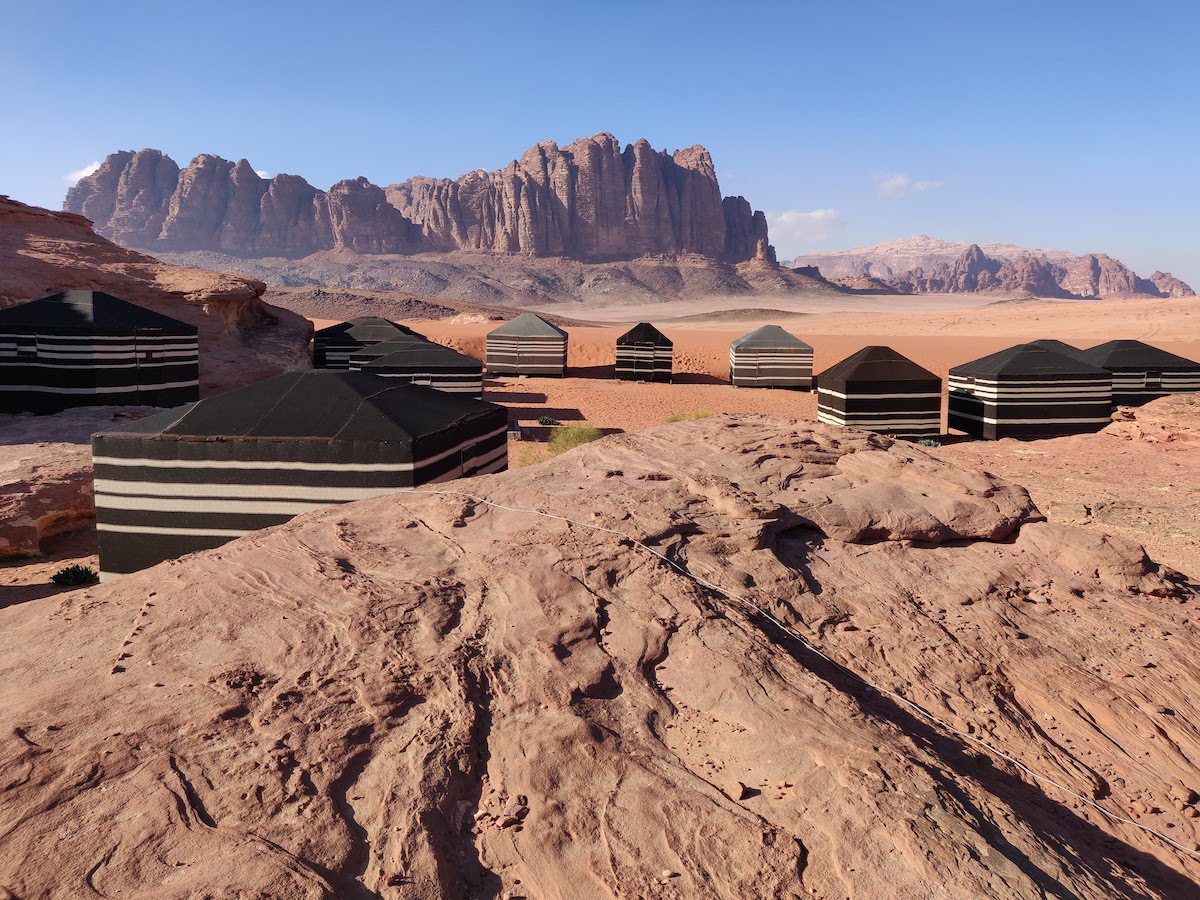
A room in a camp here is actually a wool tent with a hard floor, built and decorated in a traditional bedouin style. There's a big bed in the middle of the room with plenty of blankets for the cold night. There is also a power outlet and a single light source, but don't worry, you won't be staying in your room unless you're sleeping. The camp has a separate bigger building where you have shared toilets, running water and showers with hot water. The shared bathrooms are clean and well maintained.
Other than that, the camp area has an open fire where they serve tea non-stop and two bigger tents for eating and hanging around with the other guests. One of the tents is enclosed and warmed. Dinner and breakfast are served by the staff of the camp and the food is delicious.
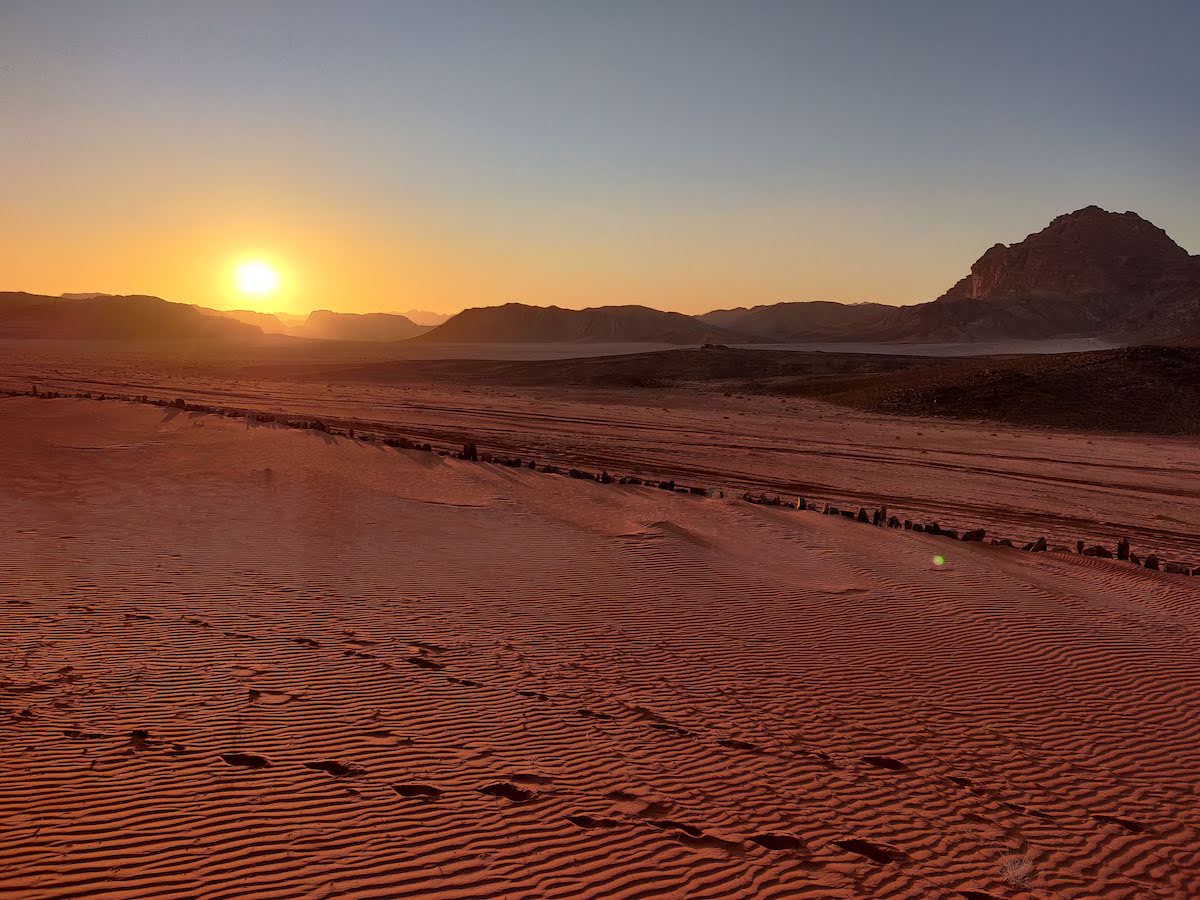
The best part is that there is no internet connection or phone signal, so you actually get to spend your time with the other guests. We had a great time getting to know our trip companions better and meeting other people from all over the world during the evening.
Later during the night, you should definitely go outside and enjoy the starry night sky. There are few places on Earth where the light pollution is so low.
Petra
The second day of the trip was dedicated entirely to Petra. All in all, we were at the site for about 6 hours. That's enough time to wander around and catch the best shots for your photo album. However, there are many hikes that you can take at Petra, some of which require multiple hours to complete, so you can spend 1-2 full days there if you have the time.
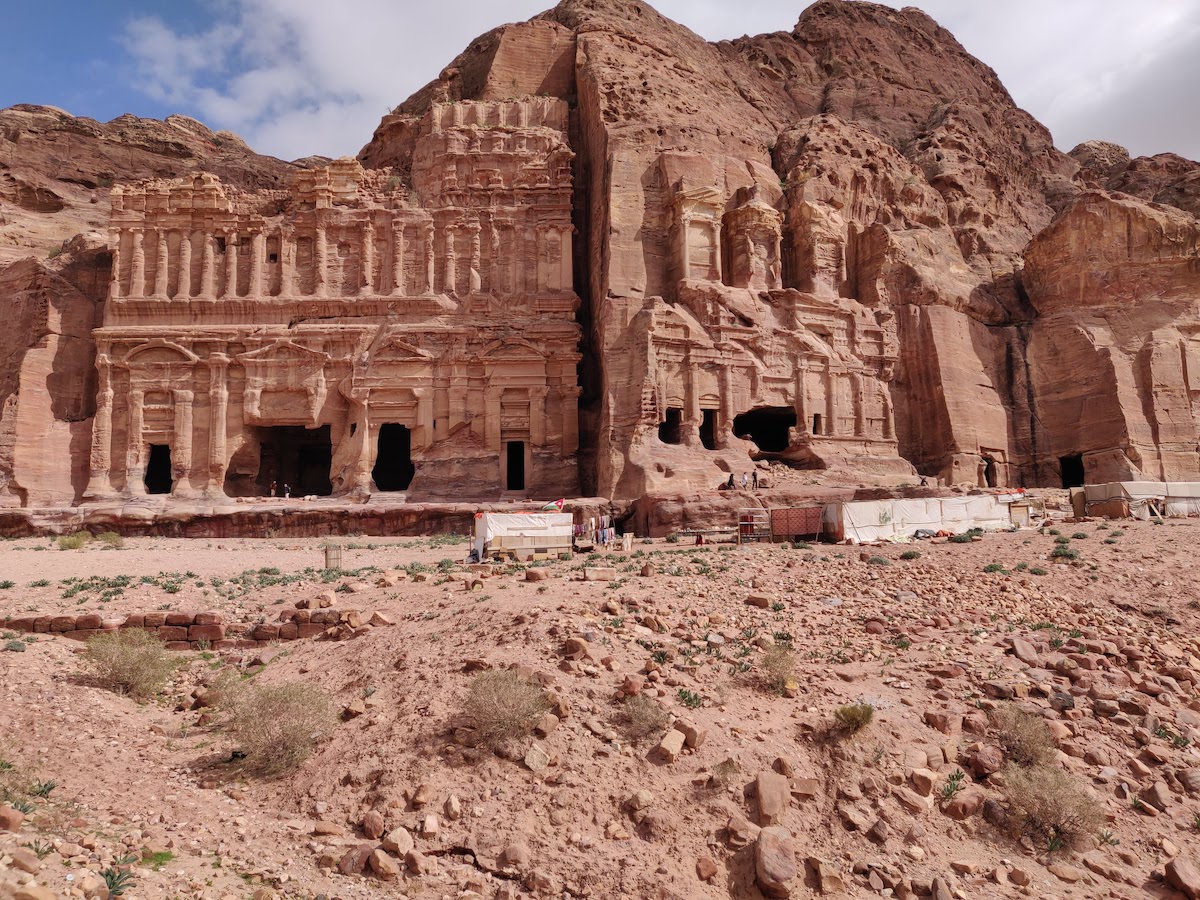
The city dates back to 2000 years ago and was built by the Nabataean civilization. It is famous for its enormous rock carvings in the red sandstone of the Jordanian desert.
The city was well preserved due to its location in a remote valley with a very narrow entrance through a canyon. As you exit the canyon you arrive in front of the most impressive building in Petra, the Treasury.
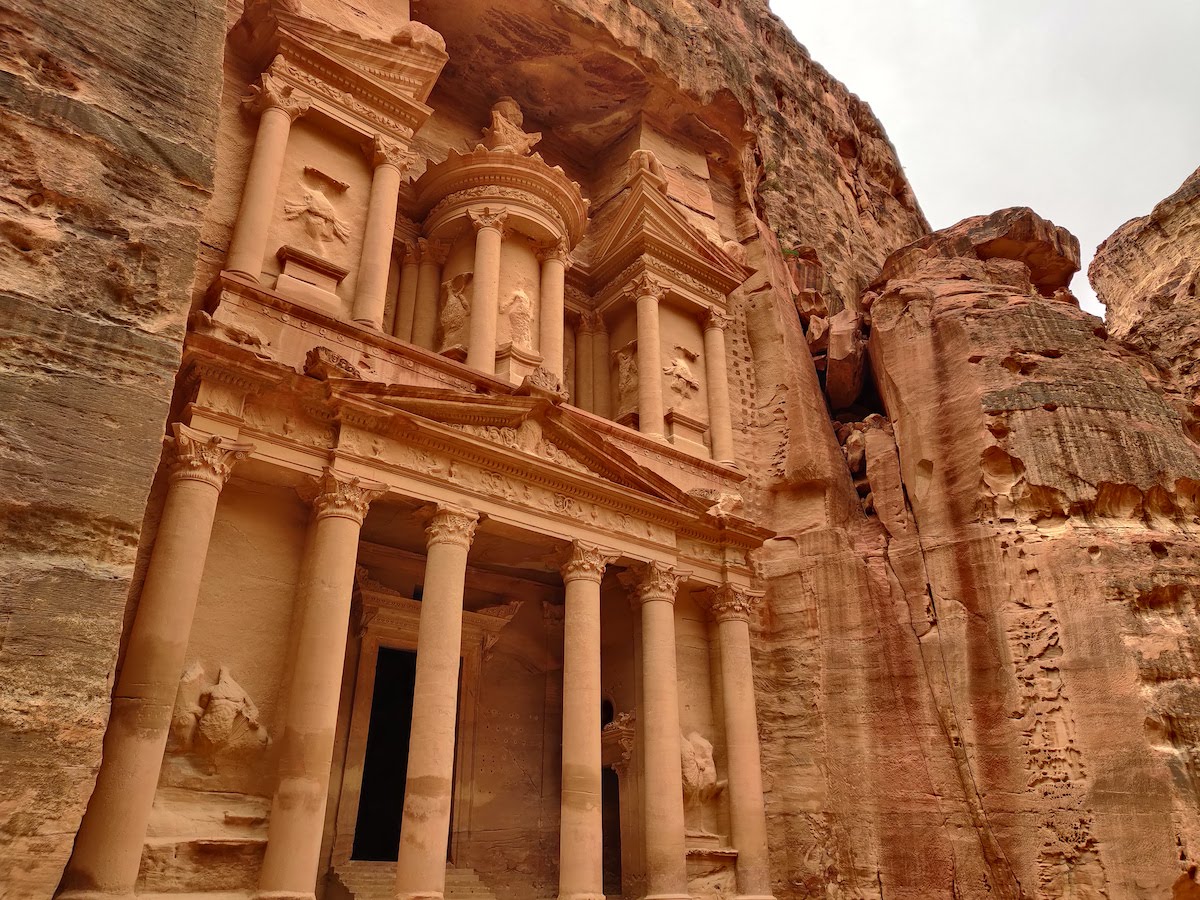
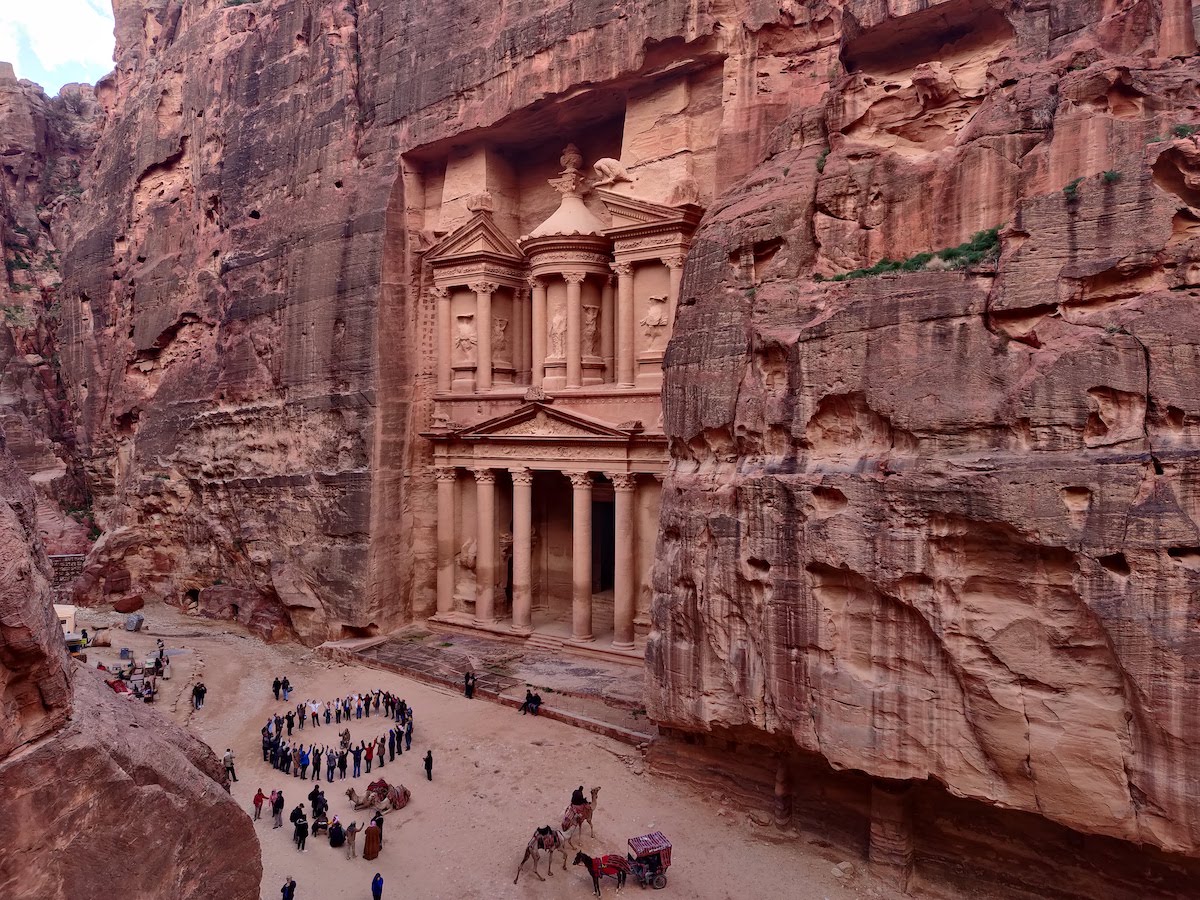
After a quick guided tour through the city, we had lunch and continued on our own, along the alley of the Royal tombs. There are a lot of spots from which you have great panoramic views of the city. But keep in mind that most of the view points require climbing some stairs or plain rocks.
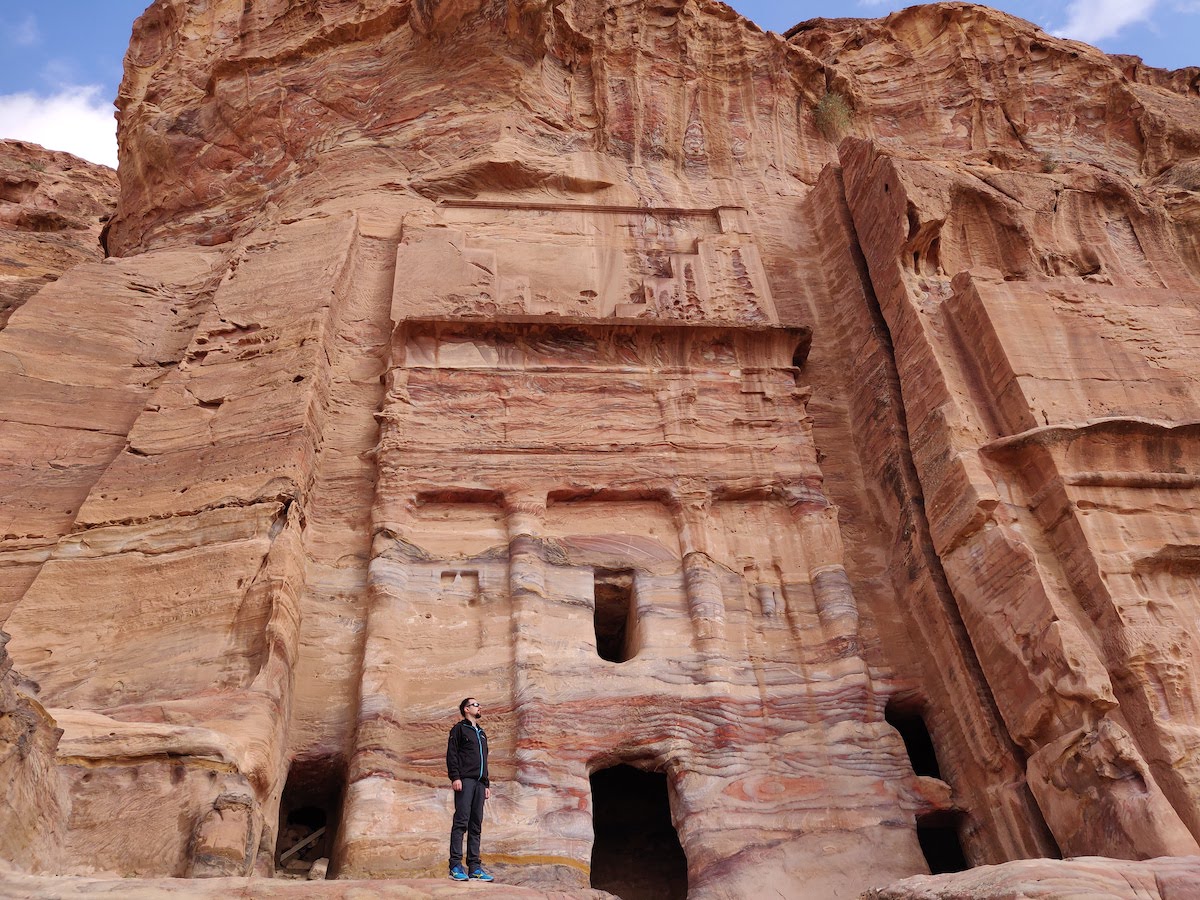
Travel tips
Jordan is a safe tourist-friendly country that you can definitely visit on your own. If you want to spend more time in the country, there are a lot of interesting spots to visit in the capital, Amman, and around the Dead Sea. When you go to Petra, it helps to have a guide as you learn more about the history and culture of the Nabataeans. We definitely recommend adding the Wadi Rum experience when you go to Petra, it was one of the high points of our entire trip in the Middle East.
The local currency is the Jordanian Dinar (JOD), one of the strongest currencies in the world (1 JOD = 1.28 EUR as of 2020). You can exchange USD or EUR in Aqaba or you can use a local ATM to get some cash. Keep in mind that you need at least 40 JOD for the border fee when you exit Jordan and you can only pay that amount in their currency, cash. As a side note, if you choose to stay for more than 3 days in Jordan, you can buy a Jordan pass and skip paying for the border fees.
You can visit Petra and Wadi Rum all year round, but you should avoid summers, as it is extremely hot. Also, the winter months can be rainy, cold and windy. The recommended months for visiting are March-May and September-November.
Jordan is an Arab country and the vast majority of the population are muslims. There are no strict dress codes, but you should still dress modestly. Long pants and covered shoulders are the best way to avoid problems and also sunburns. The desert can be deceiving because of the strong winds, but you get a nice tan after a few hours in the open, so bring your sunscreen.
Also check the weather forecast before going to Petra. Everyone expects a desert location to be hot, but city is high in the mountains and we actually had 4°C when we arrived, while the temperature in Aqaba was 25°C+. So bring warm clothes if you are visiting in late February as we did.